"50th Memorial Kyoto Hidden Cultural Heritage Special Public" that also has a first publicly-cultured property such as Tiger Hall of Ichinji Temple

There are many temples and shrines and temples in Kyoto and valuable cultural assets are kept. Among them, the event "Kyoto private non-public cultural property special release" that publicly discloses non-public cultural property usually is held twice a year in spring and autumn. This year marks the 50th anniversary from the start of the special exhibition (Showa 40/1965), and the world heritage "Historical property of ancient Kyoto"Since it is also the 20th anniversary of the registration, since 17 sites including seven World Heritage sites were made public, we have mainly looked at the first public release.
Kyoto Ancient Culture Conservation Society
http://www.kobunka.com/
All 17 places opened are the buildings themselves important cultural assets, important cultural assets are stored and exhibited in them, and the place is also quite widely scattered, so it is important to be able to turn around in one day impossible. So, this time, with the focus on the first public exhibition and world heritage, "Shizukaishinin" → "Chionin-in" → "Nishihonseiji temple" → "Kaigokuji (Toji)" → "Huangshan Mountain Bunfukuji" → " I decided to go round in a day with an amen (Nogyoji).
◆ arriving in Kyoto
Arrived in Kyoto past 8 o'clock.

Bus terminal in the north side of Kyoto Station is the place of departure this time.
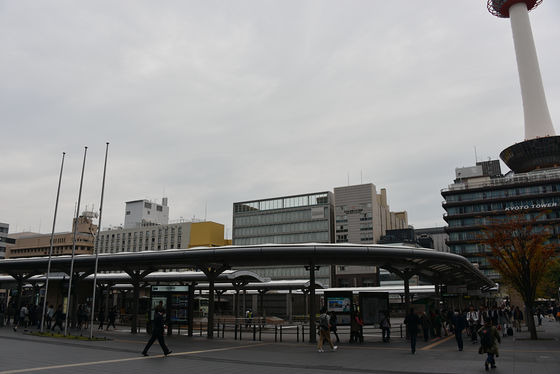
I knew that I took the bus six times at the time I made a plan this timeCity bus / Kyoto bus 1 day ticket(500 yen) purchased. Because the bus is 230 yen for adults once, if you ride more than three times you get a 1 day ticket. For people who also use the subwayKyoto sightseeing one-day ticket and Kyoto sightseeing two-day ticketThere is also.
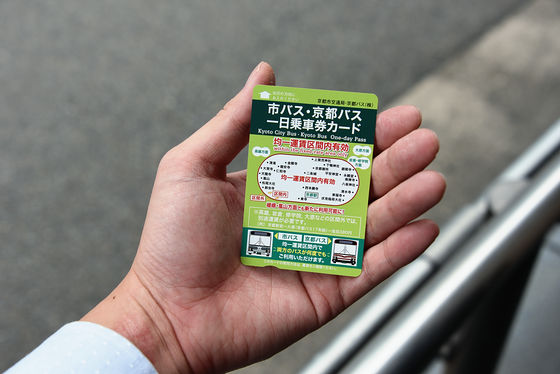
Since there is a card reader on the bus, if you pass here at the first get off the car ......
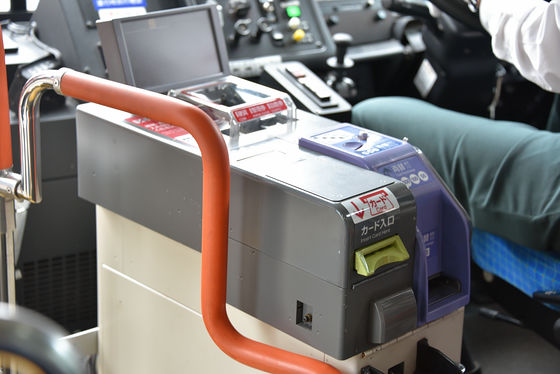
The date is printed like this. When you get off for the second time or later, you can show this back to the driver.

I found this special advertisement in the bus. The period is until November 9 (Sun).
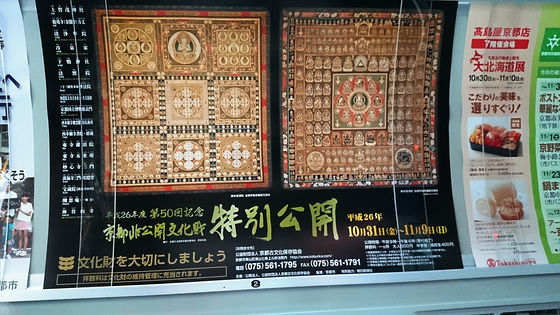
Clean Hwasei
It is the first destinationPure Land Buddhist monk Purification Huayin (Shoujo Keiken)From Kyoto Station, 4 lines, 17 lines, 205 lines of "Prefectural Medical University Hospital front" are nearest. It will be OK if you head from the bus terminal A 2 stop.
Because there was a little time in time this time, I decided to get off at "Prefectural Medical University hospital" arriving at the back gate side, get off at the "Arashiku mouth" one before and turn to the front side. I will see the bus I got on at the Arashiba mouth bus stop.
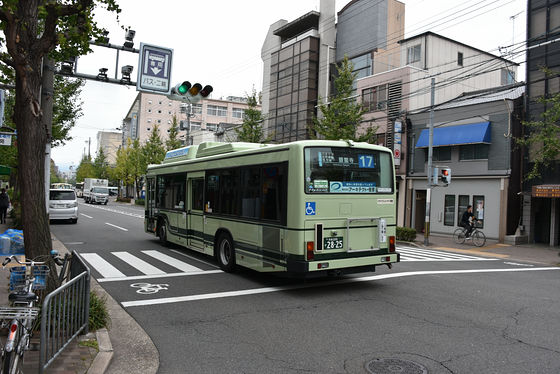
As you walk to the west west, there is the "Qing Sanwa Great Riddle God" which is the origin of the bus stop name. Go further and turn right as you strike the Imperial Palace.
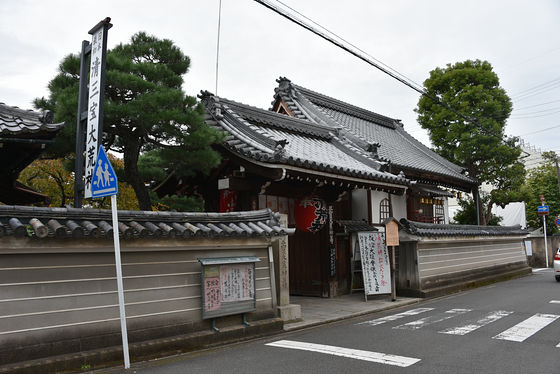
Going north to the north and pursuing a clean flower room. It seemed interesting to be doing at autumn special exhibition "Imperial family and Lushan temple" also in Lushanji on the way, but this time it is a pass.
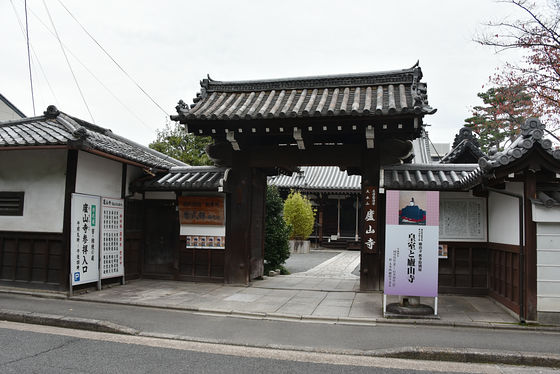
I arrived in front of the clean Hanasen less than 10 minutes from the bus stop. Compared to Kawaramachi-dori bus which the bus was running earlier, this side facing a narrow road is frontal because there is the Imperial Palace.

This signboard is always standing in the place where we are conducting Kyoto private non-public cultural property special release, and it is a marker. The admission fee is 800 yen for adults and 400 yen for junior high and high school students at any place. The admission fee is used for the maintenance and management of cultural properties. In addition, if you want to see things of the general exhibition, a separate admission fee is required separately.
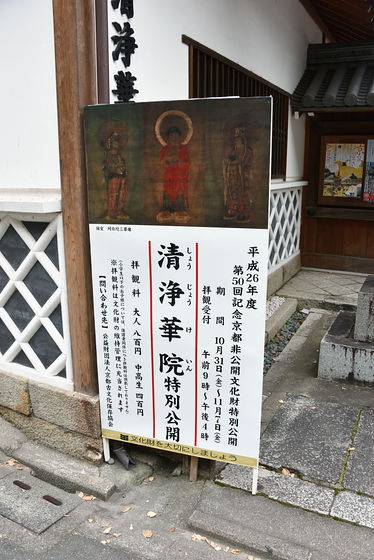
In the case of Pure Huayin, the receptionist was placed in the precincts.
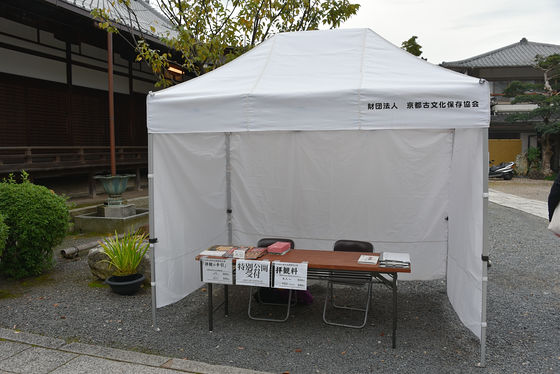
When paying a special admission fee, an elongated worship pass will be handed over. Since this ticket may be shown inside, it is good to put it in a pocket that is easy to take out. "Worship guard" is summarized for exhibits, locations, directions, etc. of various places which are being released this time and it is 300 yen.
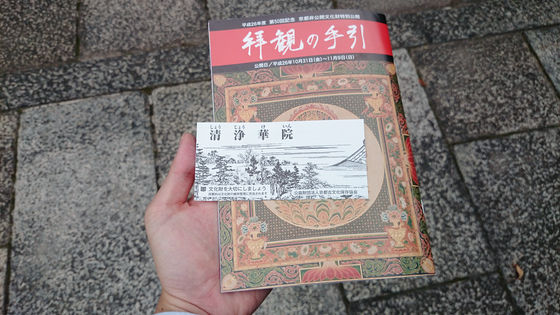
Mikado of Shikokuin Hospital. Honorary statue on the front and Statue of the monkey on the left side are secured. The legendary statue is not the one after the age of 43 who opened Jodo sect, but the one of the figure at the age of 42. Speaking of 42 years of age is a bad year, so once used to be familiar as "a bane of misery".

It is Oka-no-ru on the right hand side entering the precincts. The Amitabha three statues are secured.
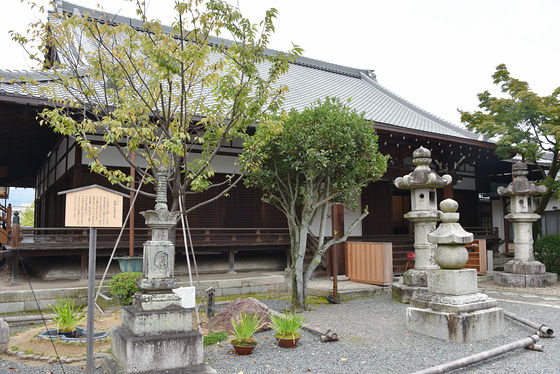
There is a guide and some people will explain the cultural properties, but use and duplication of fountain pen, ballpoint pen, felt pen are prohibited, so let 's bring a pencil for those who want to keep in mind. Also, use of mobile phones, photography, eating, drinking and smoking are prohibited. Although some shooting is OK within a special occasion, there is an explanation there.
Chinenin
After the clean Huayin,Chief Shonin ChineinI will head to. There is a bus stop in Kawaramachi Imadegawa at Imadeikawa Tunnel which walks north from Pura Hua.

If there are 201 lines up to "Chion-in Temple" nearest to Chion-in Temple, there is no transfer. Although there are no transit of 203 lines, it takes a little time because it gets bigger to the Ginkakuji Temple.
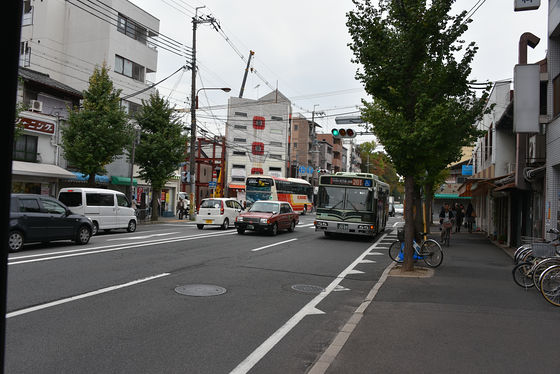
The bus crosses the Kamogawa river and heads south to the "Gion" area.
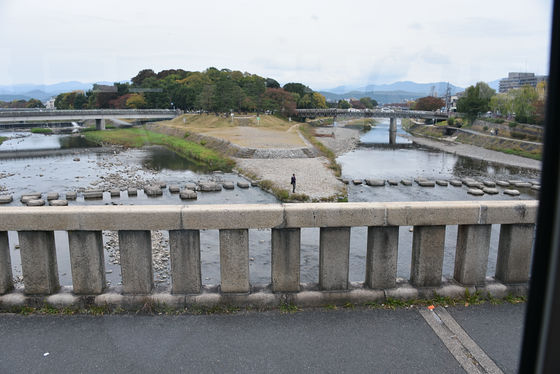
Turn right at the first traffic light from the bus stop in "Chion-in Temple" towards the north and there is "Chion-in Temple" at 1 minute on foot. Beyond this gate, schools such as Kyoto Hakka University and Hakko Junior College are in line.
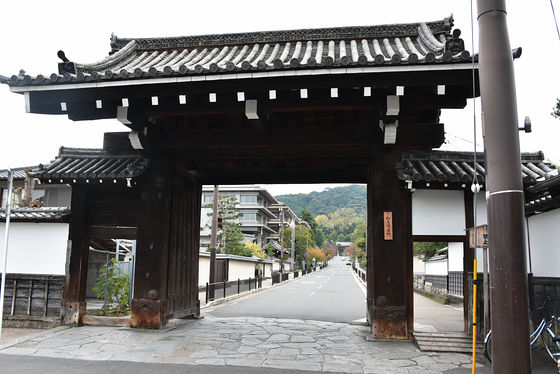
If you go straight from Karuon, you will arrive at Kiseonin Kurome.

There is Sanmon when you turn right, but this time it went straight up from the Kuromon.
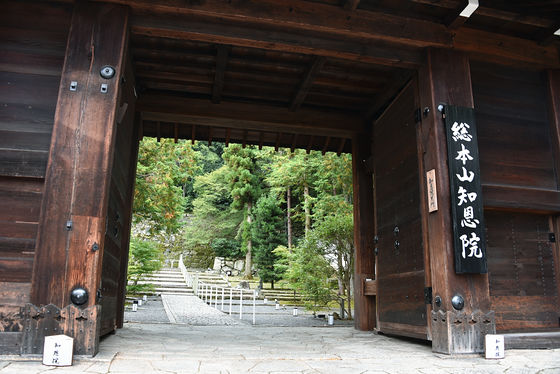
Currently, at Munsenin, Mikado is undergoing major repair. It is said that the completion schedule is 2019 years.
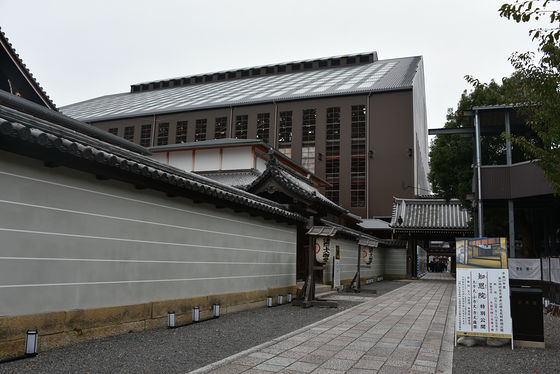
The entrance to the special worshipers is here, the samurai gate. School trip trip students were also coming.
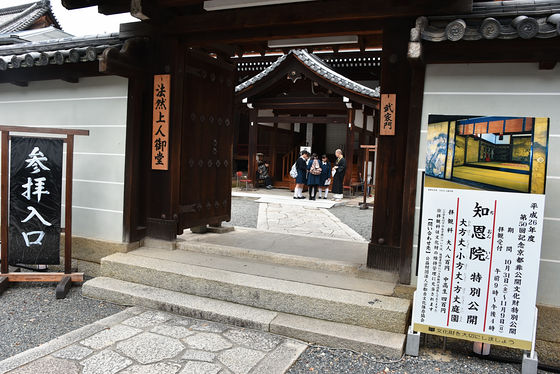
It is counted as the Seven wonders of Chion-in Temple in OkakataA corridor of clamorExperience, fusuma paintingMissed sparrowYaCat in three way frontal directionIt is possible to see.
And, it was shooting OK for Hakuji Garden, which is open to the public.
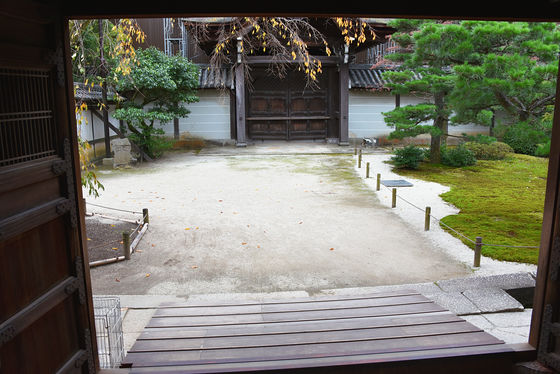
Large altitude seen from the outside.
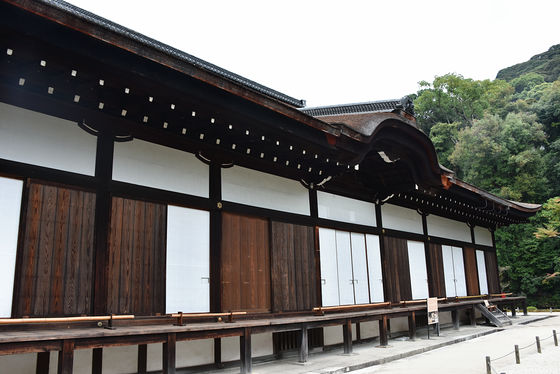
The garden was truly wonderful, and many people were turning the camera.
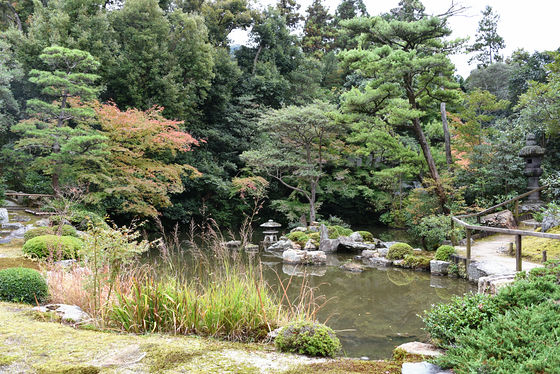
This is Konobea.
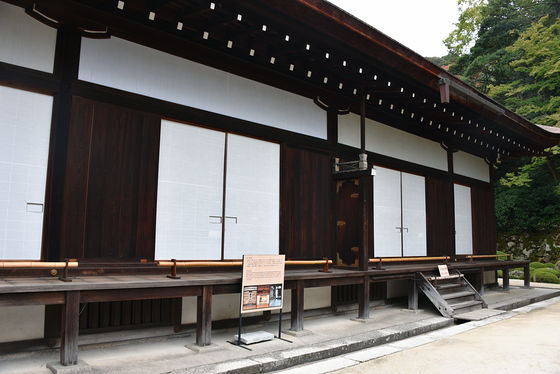
This is called "the garden of 25 bodhisattvas", which was planted on the basis of the national treasure owned by Chion-in Temple "Amida Nyorai 25th Bodhisattva visit figure". The stone is Amitabha Nyorai and 25 bodhisattva, the implantation represents a cloud coming.

If Mikado's repair is over, how spectacular it is ....
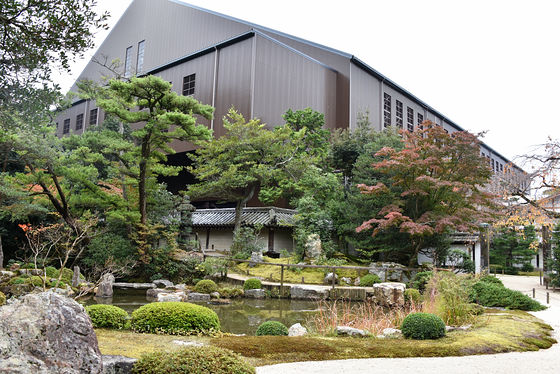
So I will leave Chinenin.
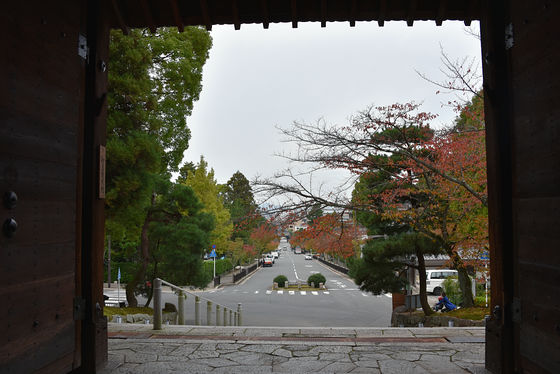
◆ Nishi Honganji
nextRyutani Honpoji (Nishihonganji temple)What. The nearest bus stop is "Nishihonganji Temple front" or "Shimabara mouth" behind the shrine, so I can not go from Chionpyeon in front by one, so this time I will transfer to Shijyugori River in 46 lines and change trains. In addition, you can go to Shijyahorikawa with 12, 201, 203 lines.
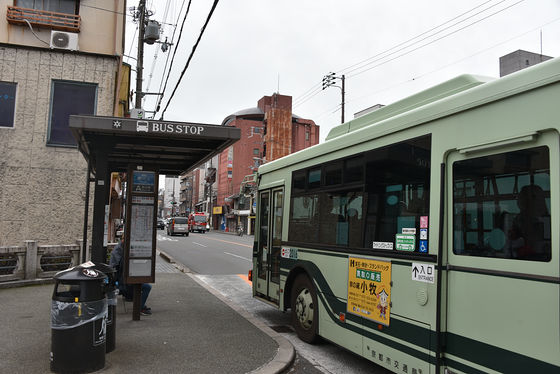
From Shijo Hori River arrive in front of Nishi Hongwanji in a few minutes if you ride 9 lines or 28 lines.

Nishihonganji Temple has huge sites and gates as well as everything.

"Horikawa frontal" crossing the intersection and going through the Mikado gate, it is Mikado in the front.

The left hand side accepts a special offer.
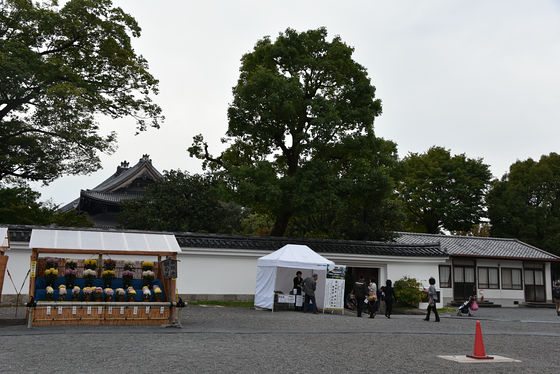
It is the Yukikaku and the former French Buddha.
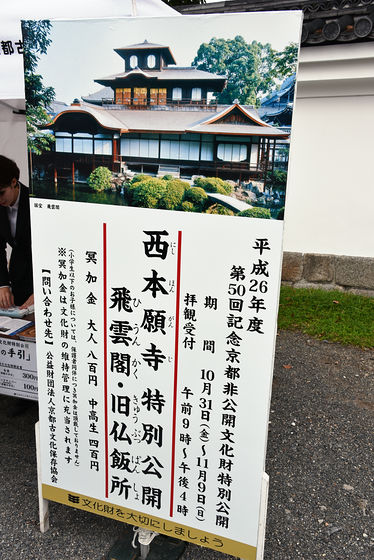
The Yukikaku is a building like this. It seems that the name of "Akitsukaku" was given because it seems that the shoji is often used and the pillar is thin and it is likely to fly when the wind blows. The building has three layers, and the floor area is getting smaller and smaller from layer to layer, but this is based on the idea that it is unlikely to create a new room on the noisy room.

It is possible to glance at only a part from outside.
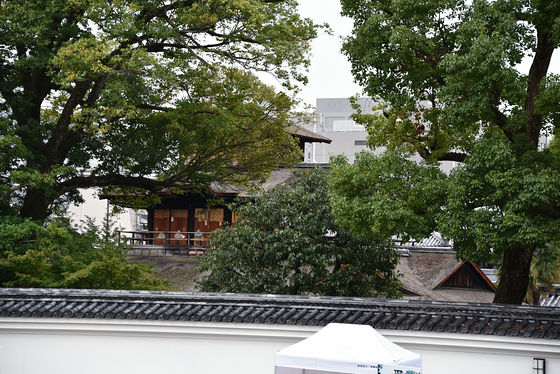
As the name suggests, the former Buddha Temple is the place where I was preparing Buddhist rice which I will offer to Amidado and Mikado once. Because the inside was narrow, a matrix was made.
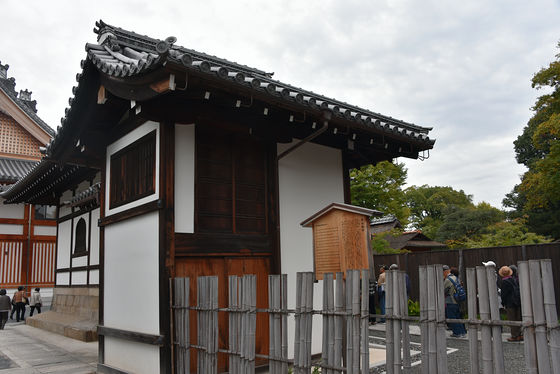
The characteristic of the appearance is that the eaves are warped like a concave shape, while the top is a roof bulging convexly, making it called "shimmer (swim)".
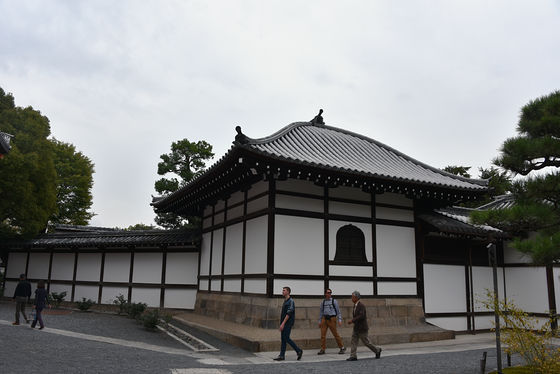
Incidentally, the school collections and treasures in the north of the French church are also subject to special public release.
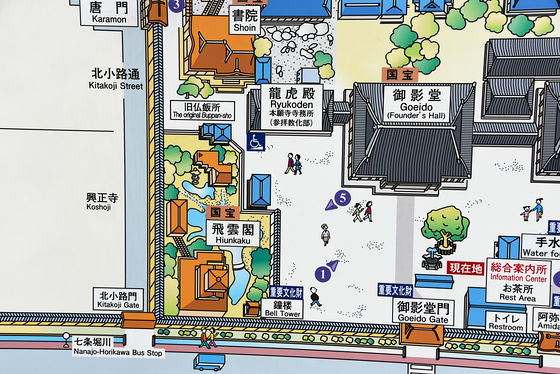
◆ Toji
Next to Nishi HonganjiToji (Shingon sect of the head temple)Although I decided to go to, I can not go there even with a single bus. Once this time I return to Shijo Horikawa river, 207 lines to go to "Higashi-ji Tempongee".
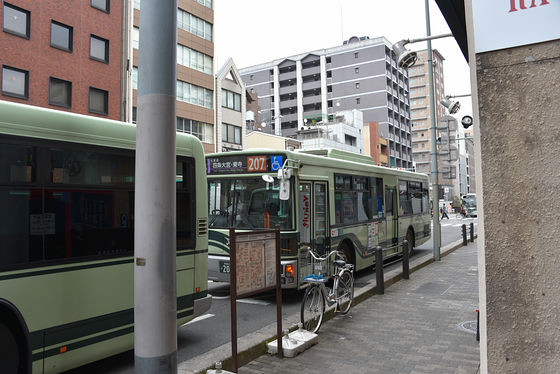
Because Tojo is south of JR, we cross the JR over the overpass and cross the Shinkansen. By the way, this gate-like thing on the overpass crossover beyond JR is the abolished Kyoto TrampOmiya LineThe overhead pillar.
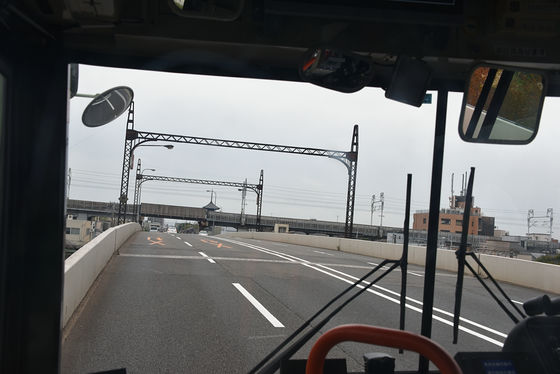
And arrived in front of Higashiji Toge gate. This is a five-storied pagoda of Toji, which can be seen from the Shinkansen.
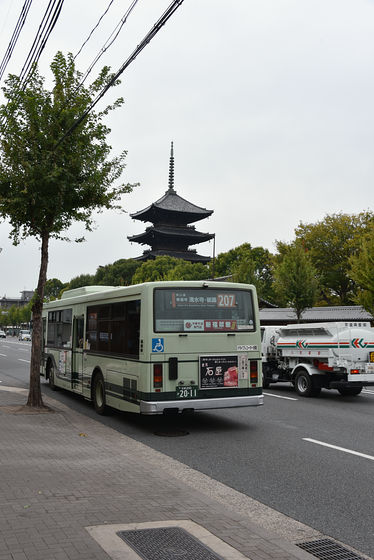
Repair work on the outside of the fence was done.
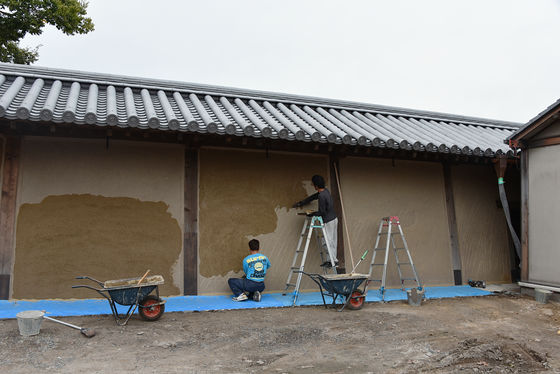
This is the eastern gate of Toji.
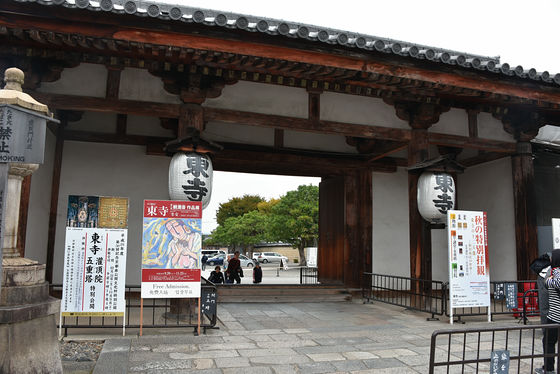
The special honorariin (Kanjoin) is located in the southwest of the premises, and it is necessary to walk all the way from the east gate.
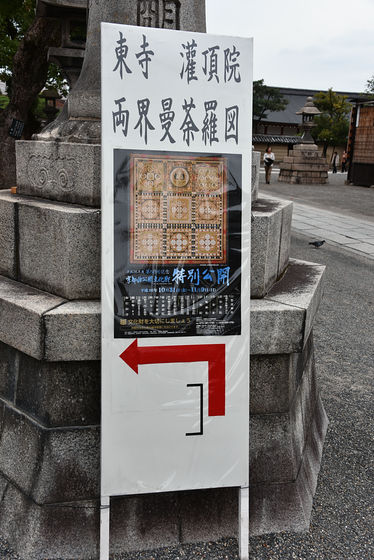
Shrine Hachiho is drawn inside the Shrimpoin, "Both military mandala figure Genroku Books" are exhibited.
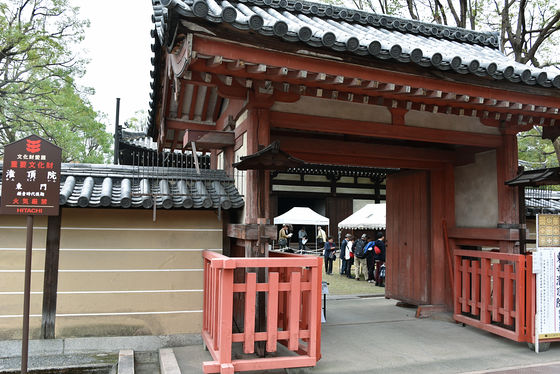
The picture is also on this signboard as to what the mandala is, but the real thing is about 3 m in length and it is big enough to look up. Since the door other than the entrance was shut off at the Honjoin, and the inside was not light other than the light that illuminates the mandala, it seems that the mandala emerges in the darkness, its vividness and divineness stand out .

Of course you can not shoot the mandala so if you want to see it carefully, there are hands to buy a poster or underlay with a tent outside the hiatusein. This is an underlay, 300 yen per sheet.
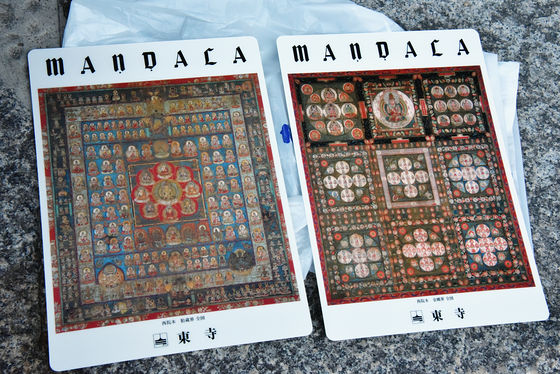
On the back side is shown what kind of Buddha is in Mandala.

The subject of 'Kyoto private non-public cultural property special release' is the hirosakiin, but we decided to look at the five-story pagoda as it opened the first layer accordingly.
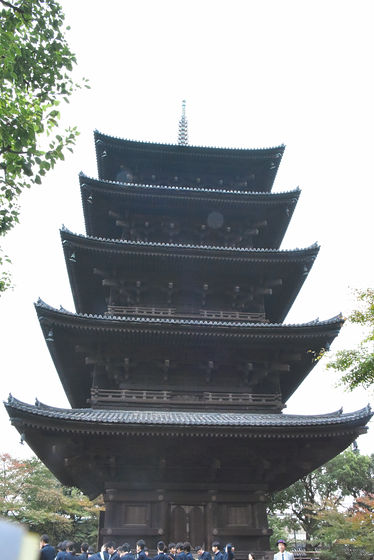
The interior is a "tantric space", the heart pillar is surrounded by Dainichi Nyori, Tathagata and Bodhisattva surrounding it, Tang Dynasty Mandala on the four sides, Eight Dragons King on the side note, Shinwa Yakusho on the wall Is drawn. The five-storied pagoda was destroyed several times, and what seems to be the fifth generation rebuilt in 1644, but the polar color of the pillar is very impressive.
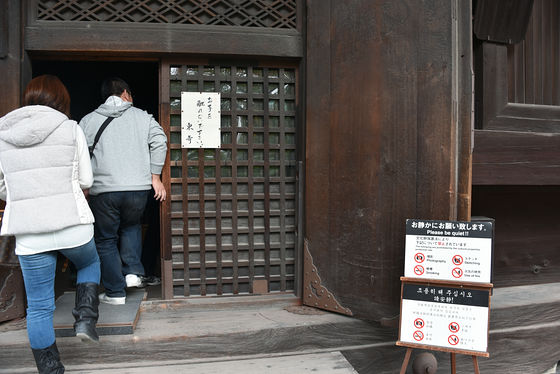
If you have opportunity to enter, not just looking from the outside, you should go.
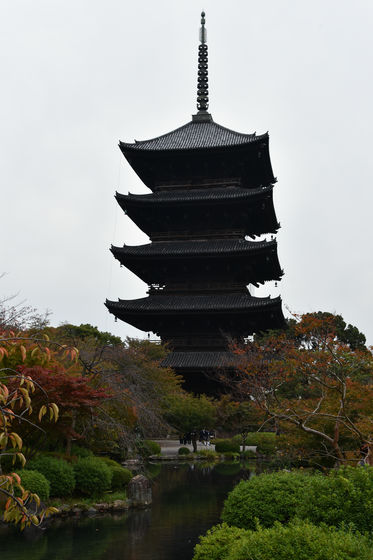
Banpuku-ji
Next, a bit far awayYellow Mountain BunkukujiTo go to Kyoto station first. Get off at "Kyoto station Hachijo mouth Avanti" ......
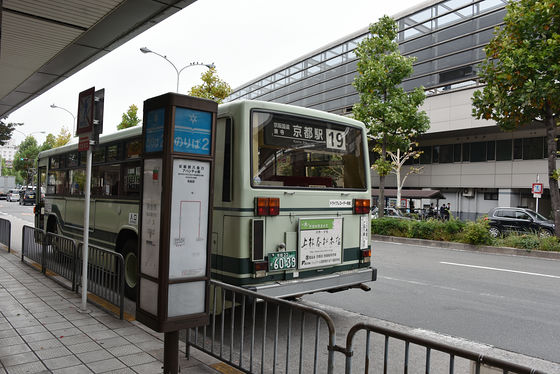
It may be a bit far to get on the JR Kyoto Line etc. because it is the east end of Kyoto Station, but it is not very inconvenient if you ride on the Shinkansen or Nara line.
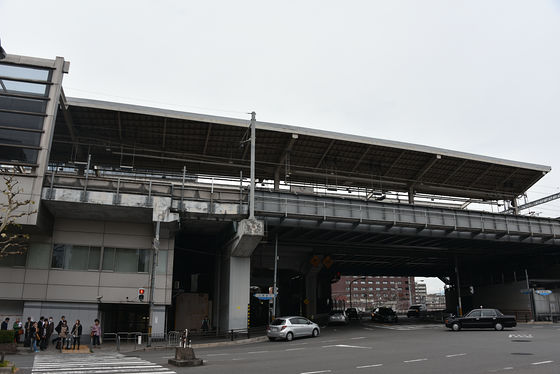
From here, I will head for Huanggang station on the Nara line.
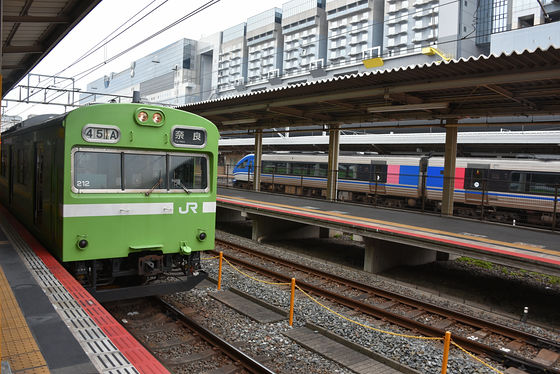
When getting off at Huanggang station there is an information map to Banpuku-ji.

Leave the station ......
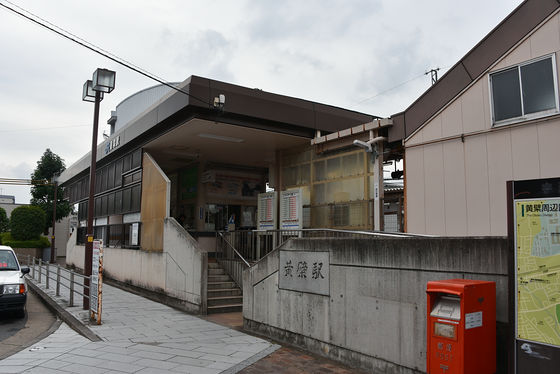
Kyoto Art High School is opposite the station. I will pass through the narrow alley on the right side.
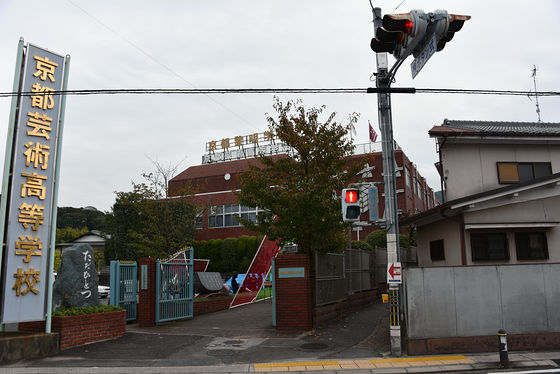
Looking back after passing through, it is like this, and the place where people are walking is alleyway. For a moment it is like I think I made a mistake in the way.
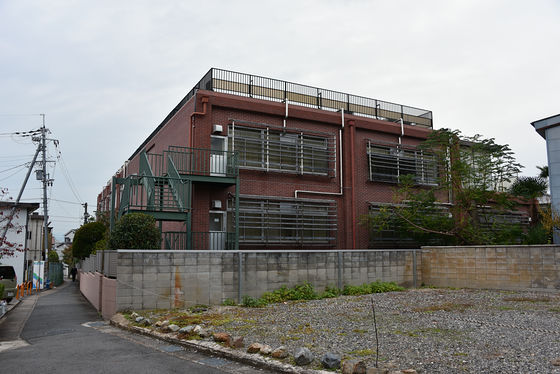
Go through the alley and turn left at the end.

Afterwards if you proceed to the road ...

It is arrival.
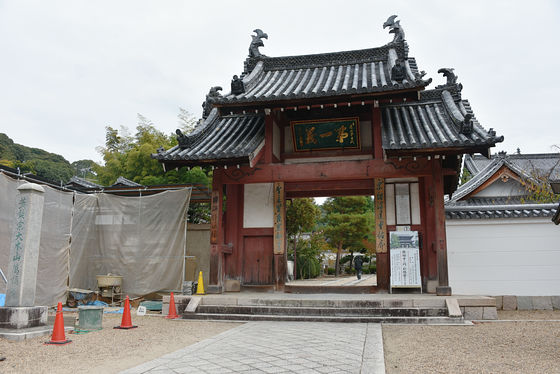
This is the Sanmon gate of Banpuku-ji
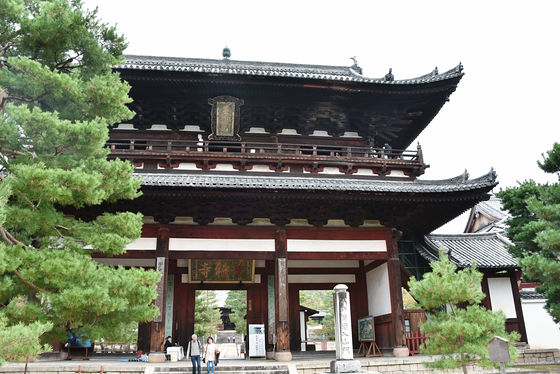
Although the appearance could be seen before, it was possible to actually go up to the Sanmon this time. It is quite a steep staircase, so it's a bit spicy for those with bad knees, but it's worth going up.
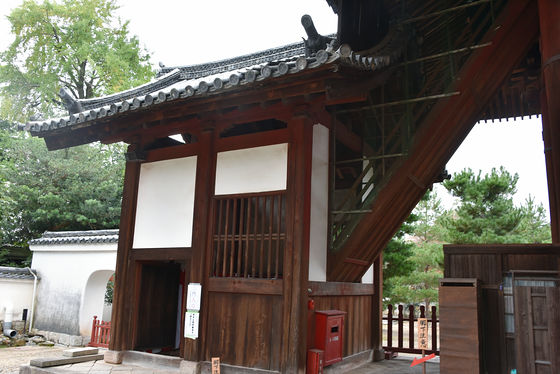
Depending on the season, you can see a pretty beautiful sight ....
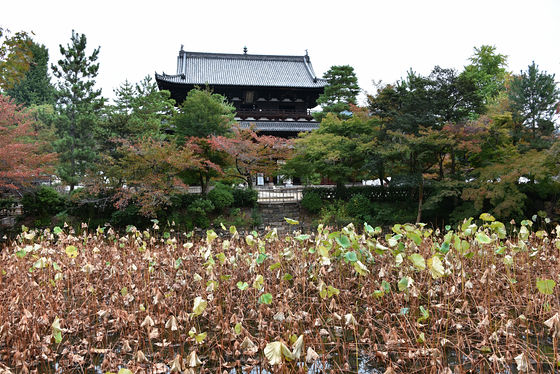
In addition, the Matsudakado on the left hand side of Sanmon is open to the public.
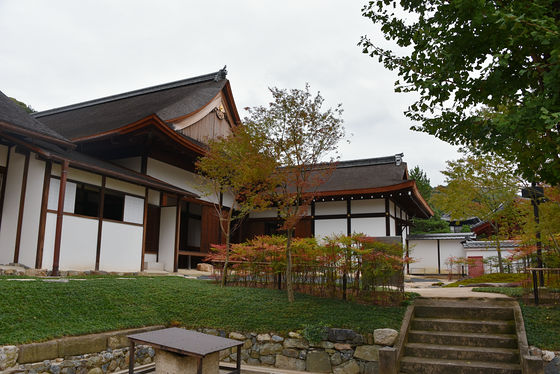
If you are in Kyoto city, you can go sightseeing relaxedly because the bus runs about 10 minutes in the city, but since Yellow Railway Station is 4 in Kyoto direction and Nara direction per hour, those who carefully schedule attention to the diamonds .
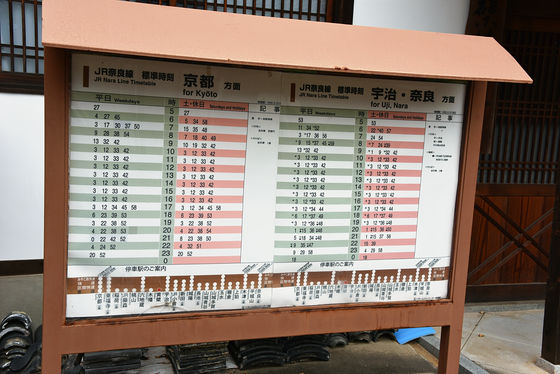
A vacation temple
On this day, the last turnGansenan (Nogyoji). Because it is in Kyotanabe-shi, moving from Kyoto city is also a bit tough as well as from Yellow Mountain. First we got on a regular train from Huanggang station.
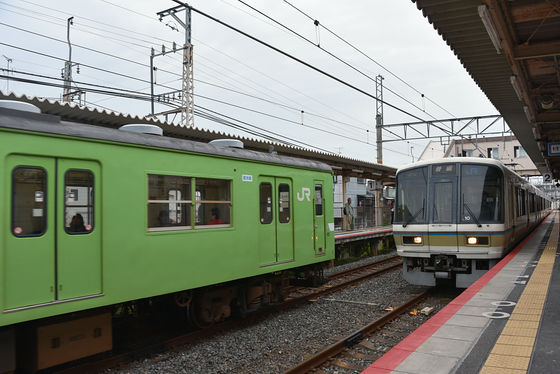
Switch to Kintetsu Kyoto Line at Nitta station.
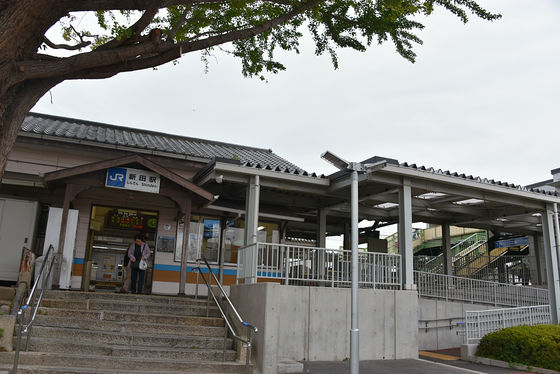
After getting off the station and entering the westward road, you can see the Okubo station on the elevation over there. However, since it can not go straight, it is safer to look at 5 to 10 minutes even for people who are quick as a traveling time.
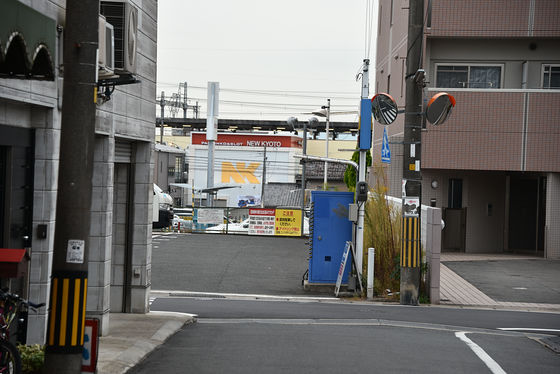
Arrival at Okubo Station, the express stops at Shin Tanabe station of the destination, so if you ride the train you came, OK.

So that's Shin Tanabe Station. It is 1.6 km west of here from here.

When leaving the west exit of the station ... ...
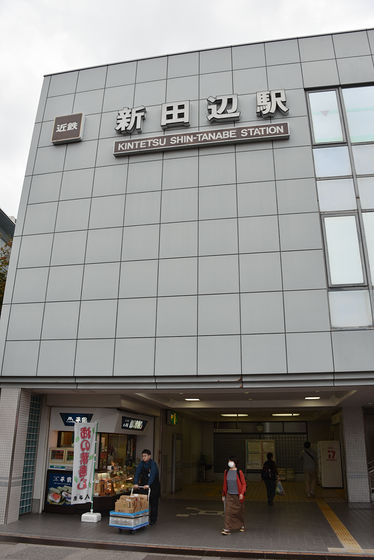
Ikkyuu was waiting.
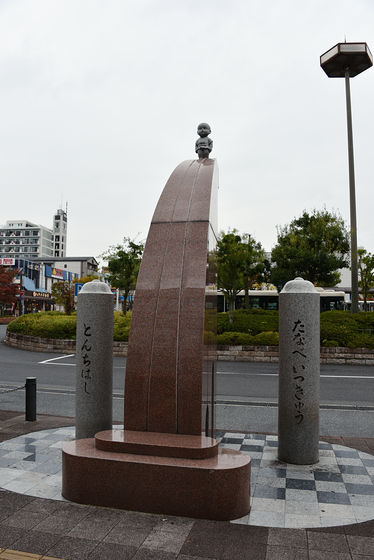
From Shin-Tanabe station to Keihan bus 66A · 66B line up to "1 nodo-ji" is about 13 minutes, it is 1 hour from 8 o'clock to 16 o'clock. Since it is a distance that I can walk from the one before "Ikkigaoka", it is also an ant to ride 79, 80, 81 series.
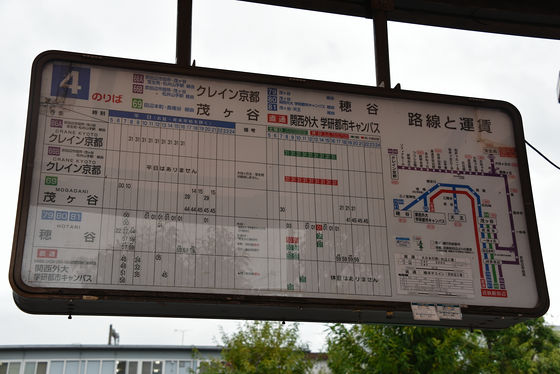
So, wait for the bus and move.
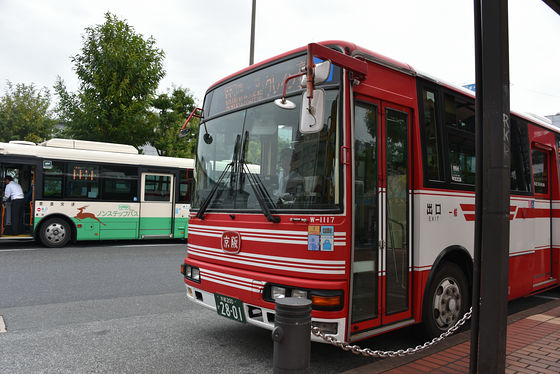
There is a bus stop of 'Noguchi-ji' which is located down the slope from 'Ikugaoka.' Because there is an up / down, walking from the station is quite hard.
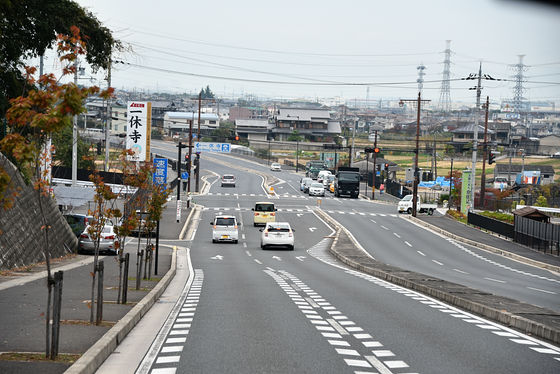
Arrived at the bus stop, it is less than 5 minutes from here to the 1st Temple.

This is Kensenan
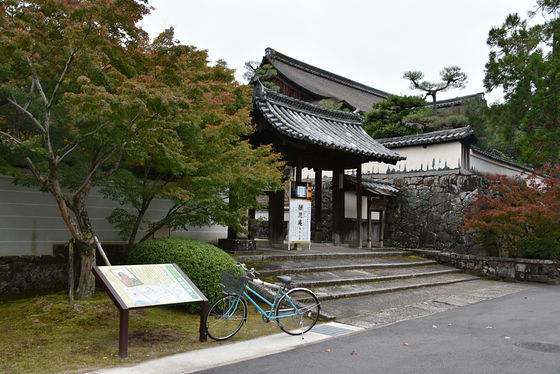
There is a receptionist as you go up from a handwater to a gentle slope. General viewing on the right side, special worship on the left side.
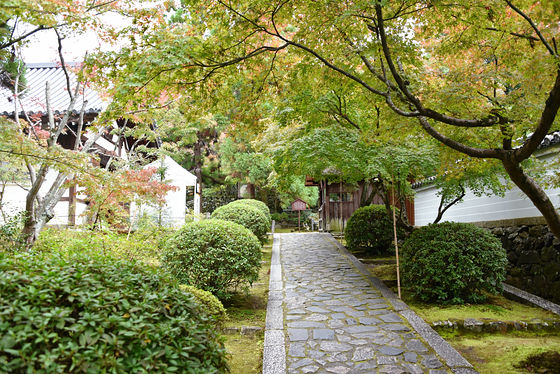
The other side of this is the grave of a restless Zen master.
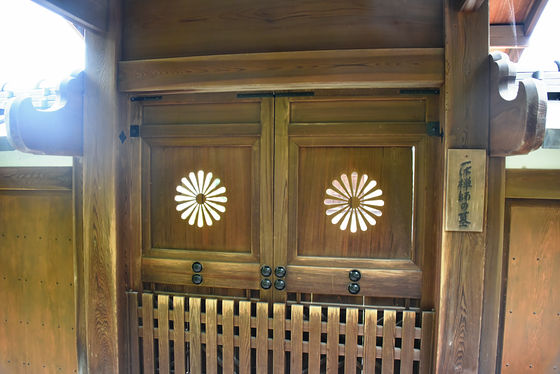
After passing through the middle gate, you see the front in front of the garage, and the length of the hill is on the right side.
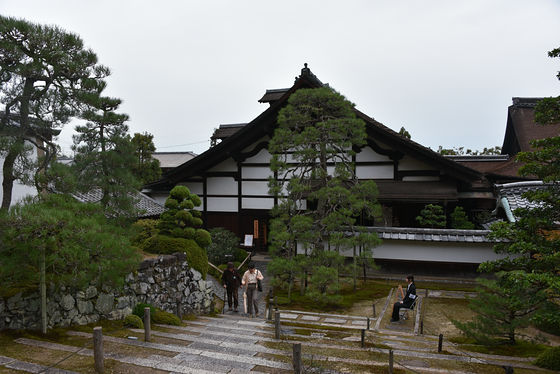
This time, one of the things that is open to the public is Higurashikaan (Kikyuan) and Tiger Hill Garden, located one step higher than the Hot Long South Garden. Tiger Hall is a cypress skin.
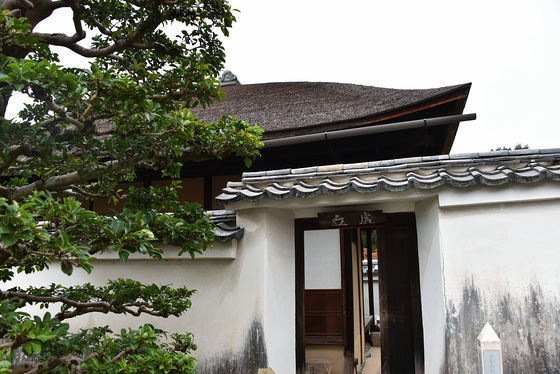
I was just on the way.
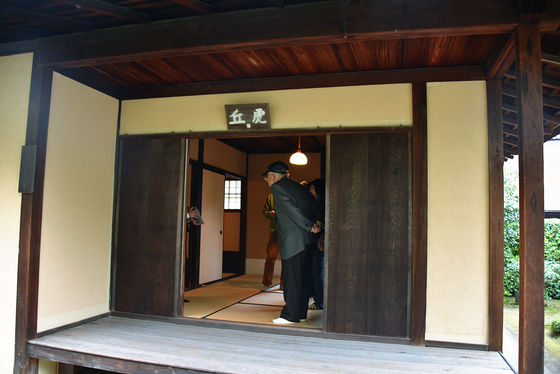
The letters of "HuQiu" are due to a holiday.

The inside looks like this. It is said that this animal was in Daitokuji which originally had a break, but moved to Higashiyama in order to avoid the war damage of Ninhin's disorder, and since it became dangerous there, it is said that it was reflected in the current position of Kyotanabe.
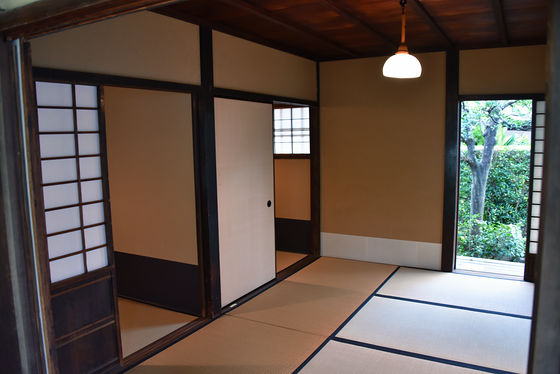
A tea room is also set up.
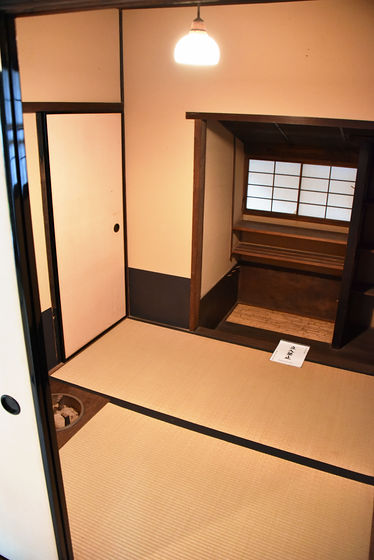
What is written on the hanging scroll is "Tea ceremony" (Kissoko). It is the word "Please go for tea".

It is from the window next to that ....
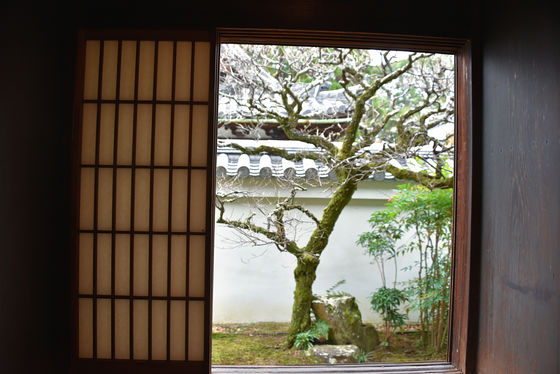
The graveyard which passed the table earlier. It seems that the rest was building this grave before her lifetime and drinking tea while watching the grave.
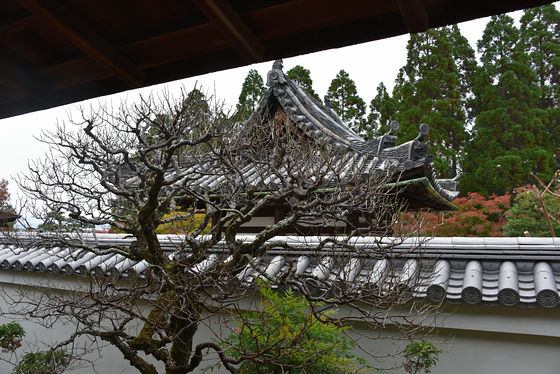
In front of Toraokaan is the Toraoru garden, the garden of Katsuyama style.
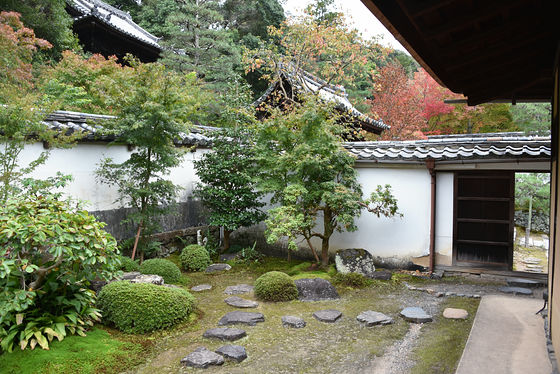
It is said that it is made by tea person Murata Zeumi.
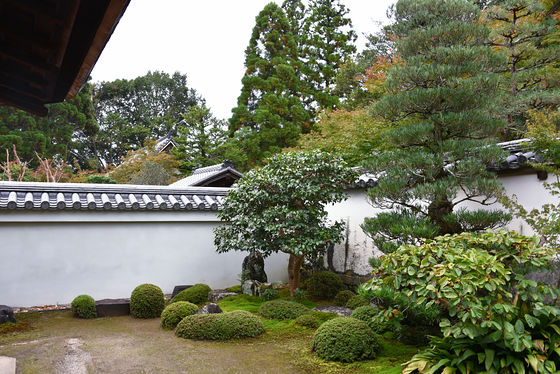
Although it is not a special occasion, in the garage there is a tiger's scissors, one of the items that comes out when we say the image of "Mr. Nagaya".
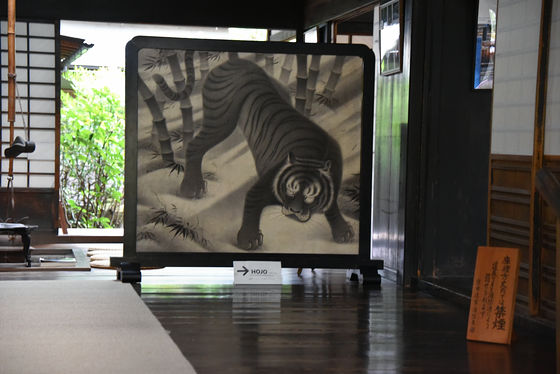
Hata - length garden behind the tiger hill ancestry.
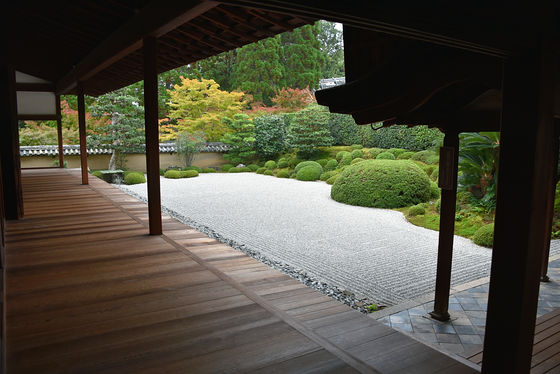
The graveyard and Tora koan are built to be adjacent to each other.
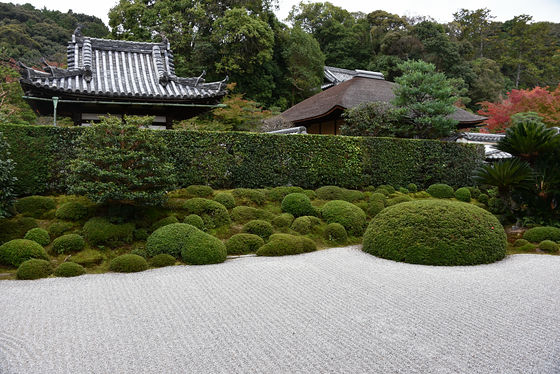
You can also take a dose at the back of the bag.
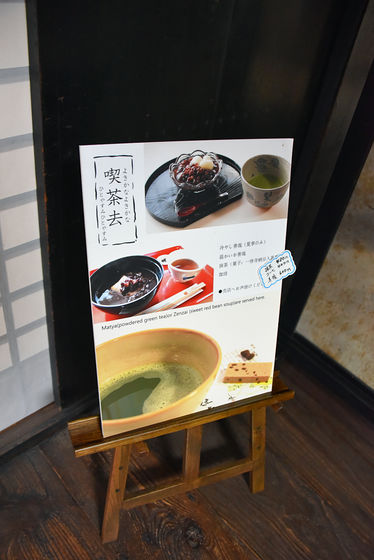
In addition, there is also one related to the animation "Ms. Nagaya" in Nogyoji.
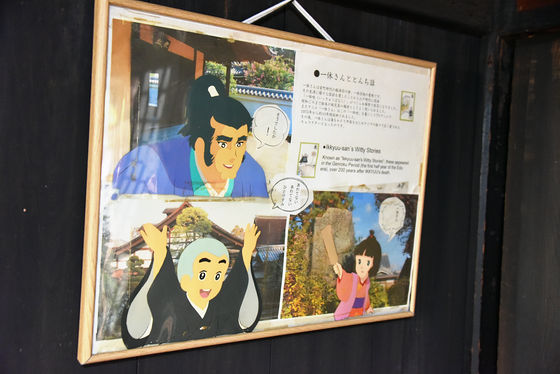
A statue of a resting Zen master in the precincts

In the vicinity there is also an image of a boysan holiday close to our "One Nagare" image. Everyone tried to scold Mr. Nogori, my head is shiny.
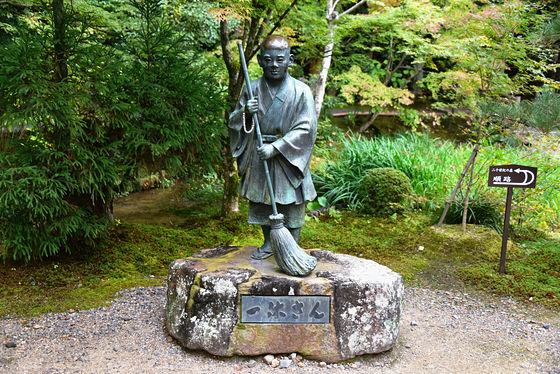
There is also "this stupid thing".
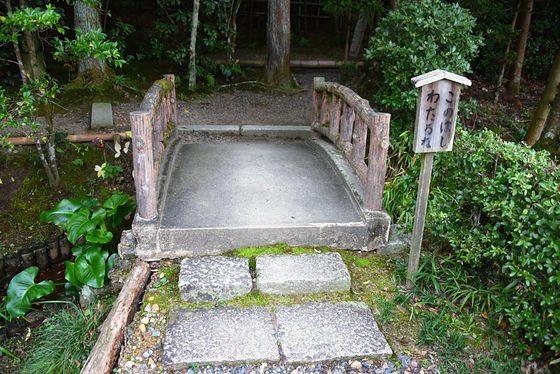
The special public watching time is from 9 o'clock to 16 o'clock, so it's time up here. I will take a bus and go home. I decided to return from Matsui Yamate Station instead of returning to Shin - Tanabe station, but because I will be on the same line as the bus I came, the number is one in one hour. If you miss the bus at 16:44 you will not be able to return.

I had plenty of time in this time so wait for the bus relaxingly and get on without problems. To Matsui Yamate Station ... ....

Arrived at Matsui Yamate Station on the Gensen-mura line. If you come this far to Osaka is a fast one.
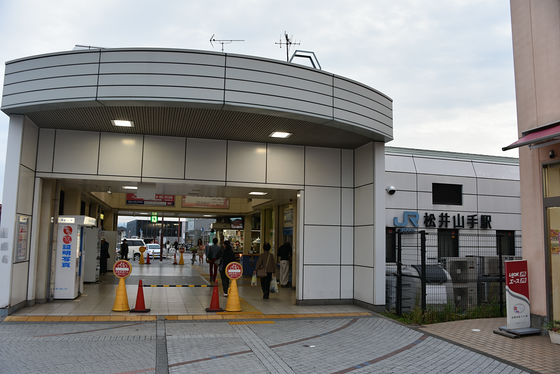
◆ Summary
This time around 6 special public exhibitions, there was also a five-storied pension watching to Toji temple (500 yen) and a general worship (500 yen) of Kensenan, so the total admission fee is 5800 yen.
Kyoto city bus costs 500 yen, Kyoto → Huangju 240 yen, Hwangyeong → Nita between 200 yen, Okubo → Nitta side 210 yen, Kintetsu Shin-Tanabe station → Nikkoji 160 yen, Yodomo → Matsuiyama station It is 210 yen, total 1520 yen.
The period of "Special Public Cultural Heritage of Kyoto" will be until November 9 (Sunday), but for example "Kurosumi family" will be open to the public on November 4 (Tuesday), the Kyoto National Museum will be closed There are, so please check the schedule to some extent after confirming where you are going to see and what you are going to see and what day you are doing. It is good to see a lot of things for seeing, but it is a cultural asset, so it would be more satisfying if you took time to listen carefully at each place.
Related Posts:
in Coverage, Posted by logc_nt







